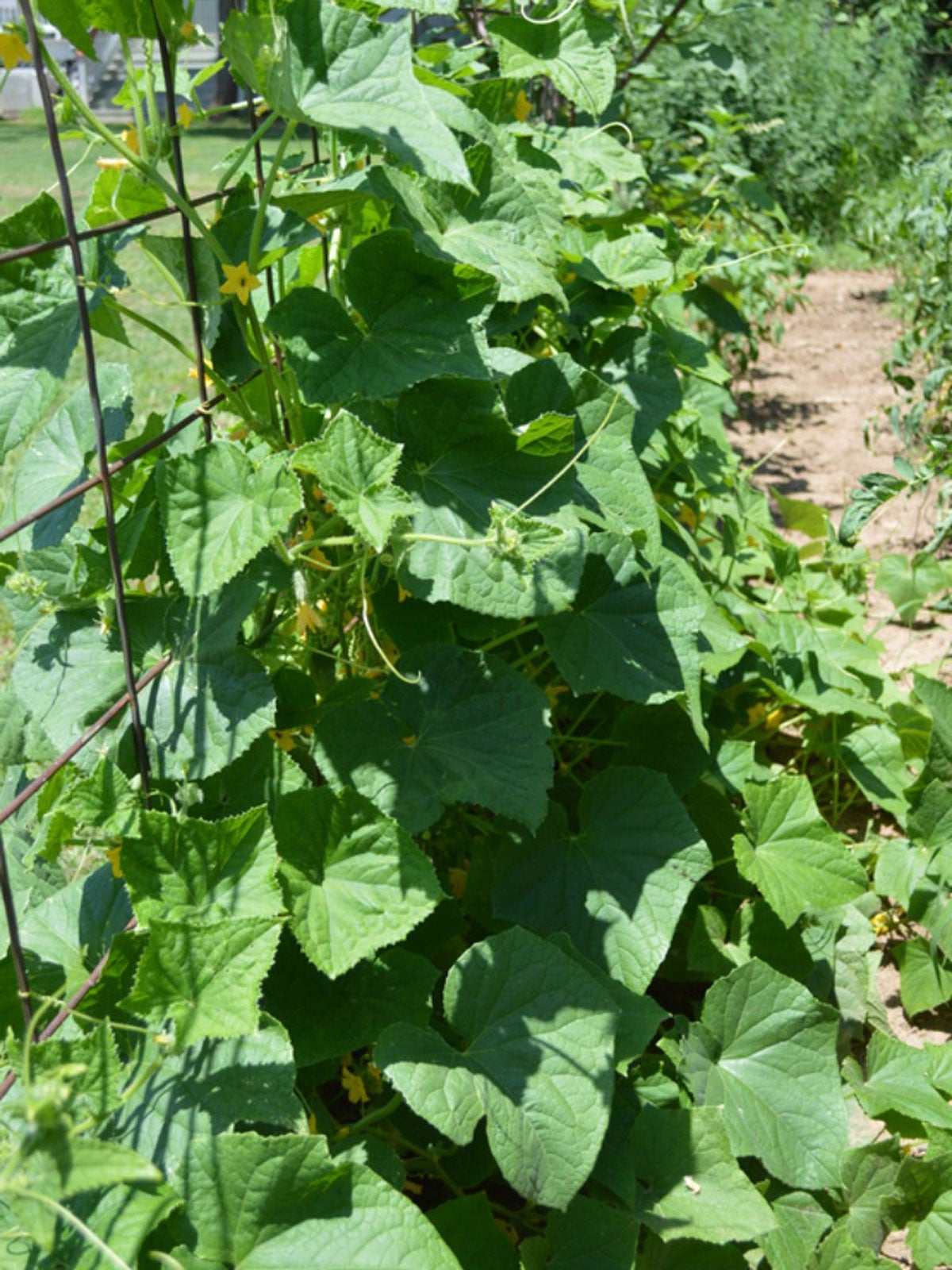Building Trellises For Squash: Tips For Growing Squash On Trellises


Space-saving ideas abound for the patio gardener and those with small spaces. Even the grower with limited areas can build a flourishing edible garden. Squash are notorious, rangy vines and can encompass much of a vegetable bed. Vertical gardening with trellises for squash will allow small garden owners the ability to raise fresh, natural fruits for their own use. Learn how to grow squash on a trellis so you can experience the satisfaction of growing your own food in even the tiniest of areas.
Growing Squash on Trellises
One of the easiest ways to grow squash and other cucurbits is on a form or trellis. Most squashes are too heavy for the average trellis without extra support, but some, like the summer squashes and smaller gourds, are perfect for vertical growth. Squash trellising can be as simple as crossing a couple of boards and threading some twine across to support the burgeoning vines. I looked in the pile of wood left by previous homeowners and found old fence slats to make my squash form. Trellises for squash can also be purchased at home and garden centers, but the cheapest way is to gather a few tools and some old wood and do it yourself.
Squash Plants for Trellis Growing
The best varieties for squash trellising are delicata, acorn, zucchini, and yellow summer. The smaller squashes and gourds do well but winter squash, like turban and butternut, can become too heavy and large for a successful vertical garden without additional support. Some squash will require supplemental support in the form of tying and even fruit slings to prevent the developing fruit from pulling off the vine. Choose the smaller types of squash plants for trellis growing as you start out and then graduate to larger varieties as you master the art of building and maintaining a trellised plant.
How to Grow Squash on a Trellis
You will need two vertical supports, such as stout wooden or metal posts, as your framework. Hammer the pieces in at an angle to each other in a tepee shape. The bottoms of the posts must go deeply enough into the soil to help support a heavy plant laden with large fruit. Space the posts 5 or 6 feet (1.5 to 2 m.) apart. You can also brace these posts with a cross angle at the base and across the middle to screw or nail into each piece. Growing squash on trellises requires a sturdy foundation as the fruit will weigh heavily on the posts. For larger squash, use a three-post system for better stability.
Maintaining Squash Trellises
As the squash grows, select three to five healthy vines to grow on and prune off peripheral growth. Build a framework of wire spaced at least 5 inches (12.5 cm.) apart on the poles. Tie the vines as they get bigger along the wires to help support the plant. As fruit is borne, use fruit slings to cradle them and prevent the weight from pulling the developing squash off the vine. The cheapest slings are made from old pantyhose, which expand as the fruit grows. Growing squash on trellises is easy as long as you keep the vines tied and the fruit supported as they grow. Other cultivation concerns are the same as any squash planted in a mound. Try vertical gardening and expand your planting real estate for more varieties of veggies in your small space garden.
Gardening tips, videos, info and more delivered right to your inbox!
Sign up for the Gardening Know How newsletter today and receive a free copy of our e-book "How to Grow Delicious Tomatoes".

Bonnie Grant is a professional landscaper with a Certification in Urban Gardening. She has been gardening and writing for 15 years. A former professional chef, she has a passion for edible landscaping.
-
 8 Noteworthy Native Azaleas Every Gardener Should Know – And Grow!
8 Noteworthy Native Azaleas Every Gardener Should Know – And Grow!Native azaleas offer brilliant blooms in a range of colors and sizes. Here are a few favorites to get inspired and start working on a native shade garden!
-
 Growing Climbing Roses: How To Create Elegant Displays With Maximum Blooms
Growing Climbing Roses: How To Create Elegant Displays With Maximum BloomsMaster the art of growing stunning climbing roses with this essential guide to creating vibrant, fragrant walls and structures all summer long.